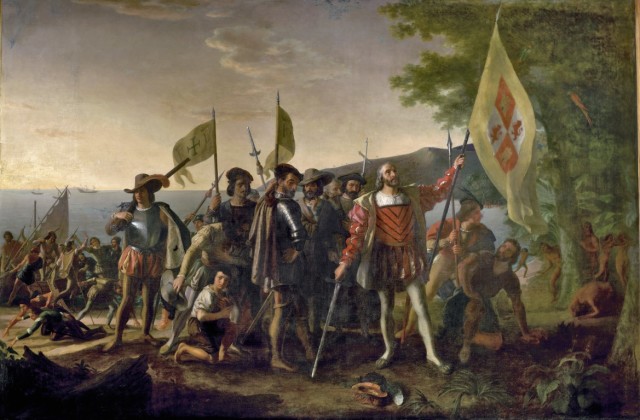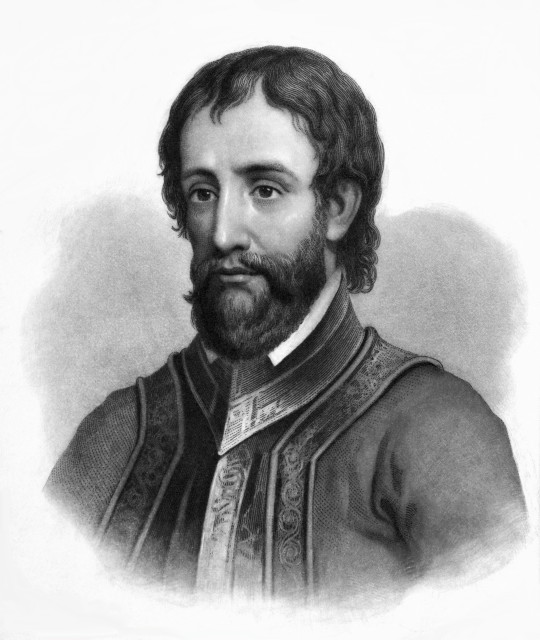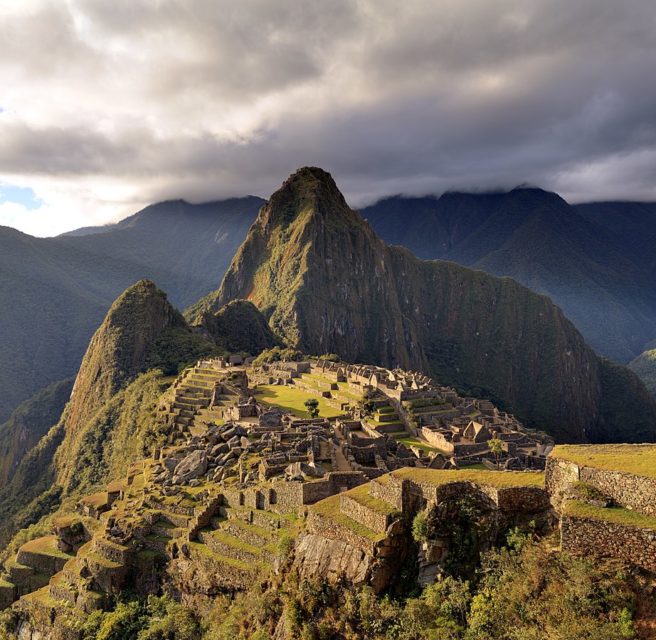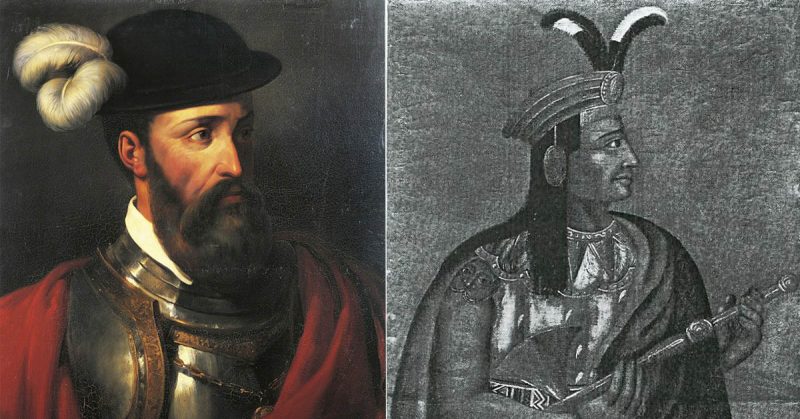Francisco Pizarro’s conquest of the Incan empire is one of the most extraordinary achievements in military history. In the space of a single day in 1532, less than two hundred Spanish conquistadors defeated an army thousands strong and captured Emperor Atahualpa, the warlike ruler of a nation that had crushed all its neighbours. By the middle of the following year, Pizarro and his men would have the Incan Empire firmly under their control, turning it into a province of the burgeoning Spanish Empire in the New World.
Far from home and vastly outnumbered, how did Pizarro and his band achieve this extraordinary feat?
Civil War
The fall of the Incas came in part because they were at their weakest for at least a decade. Two factors had undermined their ability to fight, and one of these was civil war.
For the past five years, Atahualpa and his half-brother Huascar had been fighting for control of the Incan Empire. Following the death in 1527 of their father Huayna Capac, these two men had grappled to become his heir, with Atahualpa dominating in the north, where he had been involved in military expansion, and Huascar more powerful in the south. The War of the Two Brothers broke out in earnest in 1529 and only came to an end in 1532, just before Atahualpa’s encounter with Pizarro. The victorious brother, Atahualpa had yet to even deal with the fate of the captured Huascar.
Years of war had left the Incan armies divided and weakened, and there had been no time to recover before facing the Europeans. The mountain passes were unguarded, with no-one in place to check the approach of the Spanish.
Disease
The other factor that had undermined the Incan Empire was a herald of the approaching European settlers – disease.
For centuries, Europe had been the breeding ground for a set of deadly diseases, some home grown, some imported from Asia and Africa. These diseases, the most fearsome of which originated with domesticated animals, thrived in the cramped and festering cities of the Renaissance. Though many people died from them, others developed immunities, allowing European civilisations to survive ailments such as smallpox.
The inhabitants of the Americas had no such immunities. They had not suffered the same diseases as the Europeans, or even anything close. Without many large domesticated animals, they had not suffered from crossover epidemics.
When Europeans arrived in the New World, their diseases spread to local populations with deadly speed. From there, they crossed the continent. Before the Incas had met a single European, they had suffered their diseases and seen populations ravaged. It is likely that just such a disease killed Huayna Capac himself, as well as many of his subjects.
Surprise

For pure shock value, few things could beat the arrival of conquistadors in the Incan empire. Nothing about them was like the people the Incas were used to. Their language, technology and ways of behaving were completely unfamiliar. Even their values were incomprehensible – they lusted after gold, yet had no concept of the religious symbolism it held for the Incas.
This surprise element meant that Atahualpa and those around him could not predict what the Spaniards were capable of or how they would behave. This was shown in the reckless way that Atahualpa went to face the first arrivals under Pizarro, as well as his efforts to buy them off with gold – efforts which only fuelled their greed.
Horses
Among the surprises the Europeans brought were horses.
The Incas had never seen creatures like these. Initial reports told them that the new arrivals rode fearsome four-legged monsters into battle, and everyone who saw the horses was filled with some mix of terror and overwhelming curiosity.

At the first meeting between the Incas and conquistador representatives, the Spaniard Hernando de Soto decided to show off his horse and put the wind up the natives. Charging Atahualpa’s guards, he sent them running in terror from the threat of being trampled by the horse. Atahualpa appeared unphased, but his men were not, and the horses would again strike terror into them when Pizarro routed the army and seized Atahualpa.
Steel
The Europeans were equipped with weapons and armour made of steel, far superior to those of the Incas. When they seized the emperor at Cajamarca they sliced through the guards around him while being barely scratched themselves. Swords, lances, bucklers and breastplates – all were superior in their materials to what the Incas had.
Gunpowder
By 1532, gunpowder had been a part of European warfare for two centuries. Canons were used to bombard fortresses and mounted on ships. Though they were sometimes too cumbersome to be used in a field battle, technological advances were creating increasingly effective mobile canons.
The handgun was also becoming a feature of warfare. Pizarro’s conquistadors fielded nine arquebuses, early versions of what would develop into muskets. In Europe, the advantage of handguns was that men could easily be trained to use them. In the New World, whose armies lacked the crossbows and longbows that preceded these guns, the arquebus was a hand weapon of unprecedented ranged power.
All of these weapons were used to devastating effect in defeating the Incas. Though their power was important, so was their shock value. The noise and destruction of the guns, much like the thunderous approach of horses, terrified Incan warriors and sent them fleeing.

Planning
Among the big picture details of technology, society and epidemiology, it’s easy to lose sight of the importance of individuals in this confrontation. But the best weapons in the world could not have saved the Spaniards if they were not applied well. It was thanks to Francisco Pizarro that they were put to such good effect.
On meeting Atahualpa’s forces on that fateful day, Pizarro prepared the ground well. He kept his men and horses in hiding, to maximise shock value. He used politics and the Emperor’s confidence to draw him into an ambush. He combined the tools available to him to route the guards and seize Atahualpa before resistance could even begin.
The Incas fell for many reasons, and Pizarro was one of them.
